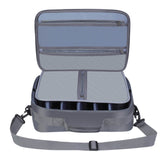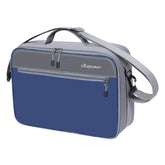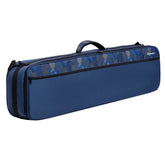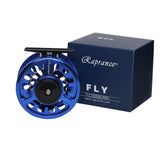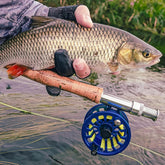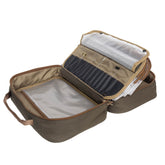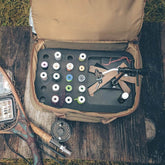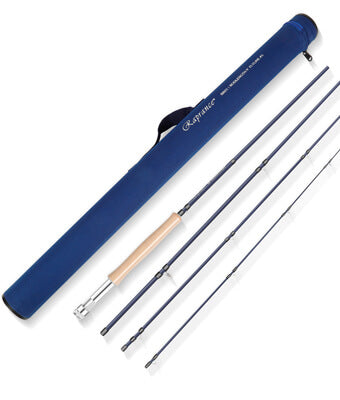Fly Rod: Choosing the Best Fly Fishing Rod for Trout, Bass, and Salmon
Choosing the right fly rod can significantly enhance your fishing experience, whether you’re targeting trout, bass, or salmon. Understanding the specific characteristics required for each type of fly rod will help improve your casting techniques and overall success. With the right gear, you can feel the difference in performance and precision, making your fishing trips more productive and enjoyable.

I often find that a specialized fly rod a crucial investment for different species. A lightweight rod works wonders for delicate trout fishing, while a sturdier model is essential for battling the strength of bass or salmon. By comparing fly rods with spinning rods, I’ve learned that each has its advantages; fly rods offer unique casting techniques that can deliver a more immersive experience on the water.
Whether you are selecting a fly rod for local streams or open waters, understanding your target species will lead to better gear choices. With expert advice and the right fly fishing gear, my trips have consistently resulted in a more rewarding and engaging experience.
Fly Rod Fundamentals
When selecting a fly rod, it’s crucial to understand rod action, weight, and the components that comprise the rod itself. These elements significantly impact your fishing experience and the rod's performance in various conditions.
Understanding Rod Action
Rod action refers to how much and where a rod flexes when under pressure. There are generally three categories:
- Fast Action: This type bends mostly at the tip, allowing for quick line casting and enhanced sensitivity. Ideal for longer casts and precise presentations.
- Medium Action: This flexes through the midsection and tip, offering a balance between casting distance and control. It’s versatile for different fishing styles.
- Slow Action: Bending throughout the length, slow action rods provide a softer touch, making them excellent for delicate presentations and light tippets.
Selecting the right action can enhance my casting ability and lead to improved hooking success.
Choosing the Right Rod Weight
Rod weight is a critical factor that determines how well a rod can cast various line types and sizes. Weight is categorized from 1 to 14, with lighter weights suited for small fish and heavier weights designed for larger species.
- 1-4 Weight: Best for small freshwater species like trout.
- 5-7 Weight: Suitable for larger freshwater fish and smaller saltwater species.
- 8+ Weight: Required for big game fish like salmon or larger saltwater fish.
Using an appropriate rod weight aligns with my target species and ensures optimal performance.
Components of a Fly Rod
A fly rod consists of several key components that influence its functionality:
- Blank: The main body of the rod, usually made from materials like graphite or fiberglass for durability and sensitivity.
- Guides: These are the rings through which the line passes, affecting casting efficiency.
- Reel Seat: Secures the fly reel, affecting balance and ease of use.
- Handle: Typically made of cork or foam, offering comfort during extended use.
Understanding these components allows me to choose a rod that fits my fishing style and enhances my overall experience.
Fly Rod Selection for Various Game Fish
Choosing the right fly rod can significantly enhance your fishing experience. Each game fish species requires specific rod characteristics to optimize your success on the water.
Fly Fishing Rod for Trout
When targeting trout, I prefer a rod that is lightweight and sensitive. A 3 to 5 weight rod is typically ideal for this species. These rods allow for delicate presentations, which are crucial in clear streams and rivers.
Length: A 9-foot rod offers versatility for most situations, while shorter rods can be better suited for tight spaces like small streams.
Action: A medium to fast action rod provides the responsiveness needed for quick hook sets. This is especially important when trout are rising to the surface.
Fly Fishing Rod for Bass
For bass, heavier rods are necessary because of their aggressive nature. I recommend using a 7 to 9 weight rod to handle bigger flies and withstand hard strikes.
Length: A 9-foot rod gives me the reach needed for casting in lakes and rivers.
Action: Fast action rods are beneficial for quickly loading the rod and making accurate casts. This is essential when targeting bass hiding in thick vegetation or structure.
Fly Fishing Rod for Salmon
Salmon fishing demands a robust rod due to the fish’s size and fighting ability. A 8 to 10 weight rod is optimal for this scenario.
Length: I often choose a 9 to 10-foot rod, as this length works well for casting large flies in rivers and lakes.
Action: A medium to fast action rod provides the strength necessary to control the fish during its vigorous runs. This is especially important when fishing for salmon in fast-moving water.
By understanding these specific rod characteristics, I can better gear up for the challenges posed by each game fish species.
Comparing Fly Fishing Rods to Spinning Rods

When I consider fly rods and spinning rods, the fundamental design sets them apart. Fly rods are typically longer and more flexible. This characteristic allows for delicate presentations and better line control when casting.
In contrast, spinning rods are generally shorter and stiffer. They excel at casting heavier lures and can handle a variety of fishing conditions. The difference in rod action impacts how I present my bait to different target species.
Key Differences
| Feature | Fly Rod | Spinning Rod |
|---|---|---|
| Length | Usually 8-10 feet | Typically 6-7 feet |
| Flexibility | More flexible for delicate casts | Stiffer for heavier lures |
| Line Control | Excellent line control | Moderate line control |
| Target Species | Trout, salmon, and smaller bass | Bass, pike, walleye, etc. |
Choosing between them often depends on the target species. For delicate presentations to trout and salmon, I prefer a fly rod. For bass fishing, a spinning rod feels more effective due to the ability to cast lures farther.
Each rod type serves specific techniques and environments. I find that matching my rod to the fishing scenario can enhance my overall experience and success on the water.
Brand Insights and Expert Recommendations

When selecting a fly rod, understanding brand reputation and seeking professional advice can significantly enhance your fishing experience. Certain brands stand out for their quality, while expert tips can refine your casting technique.
Top Brands for Fly Rods
In the realm of fly rods, three brands consistently receive high praise: Orvis, Sage, and G. Loomis.
- Orvis offers a range of options suitable for both beginners and experienced anglers. Their rods are known for durability and sensitivity, especially suitable for trout fishing.
- Sage is renowned for innovation and performance, particularly valued among serious anglers. Their rods provide excellent control and casting distance, with models tailored for both freshwater and saltwater applications.
- G. Loomis focuses on precision and strength, making them a top choice for targeting larger fish like salmon and bass. Their lightweight designs enhance casting efficiency while maintaining powerful action.
Expert Tips for Improved Fly Casting
To elevate your fly casting, consider these expert recommendations:
-
Focus on Your Stance: Stand with feet shoulder-width apart. A stable base allows for better energy transfer during casting.
-
Utilize the Wrist: Your wrist plays a crucial role in casting. A fluid wrist motion can enhance accuracy and distance.
-
Practice Loading the Rod: Load the rod properly during backcasts. This builds energy for a more effective forward cast.
-
Mind the Line: Ensure your fly line is straight and free of tangles. A smooth line enables better casting dynamics.
-
Visualize the Target: Before casting, focus on your target. This mental preparation improves accuracy and distance control.
Incorporating these techniques will increase your confidence and efficiency on the water.

